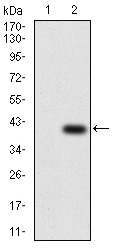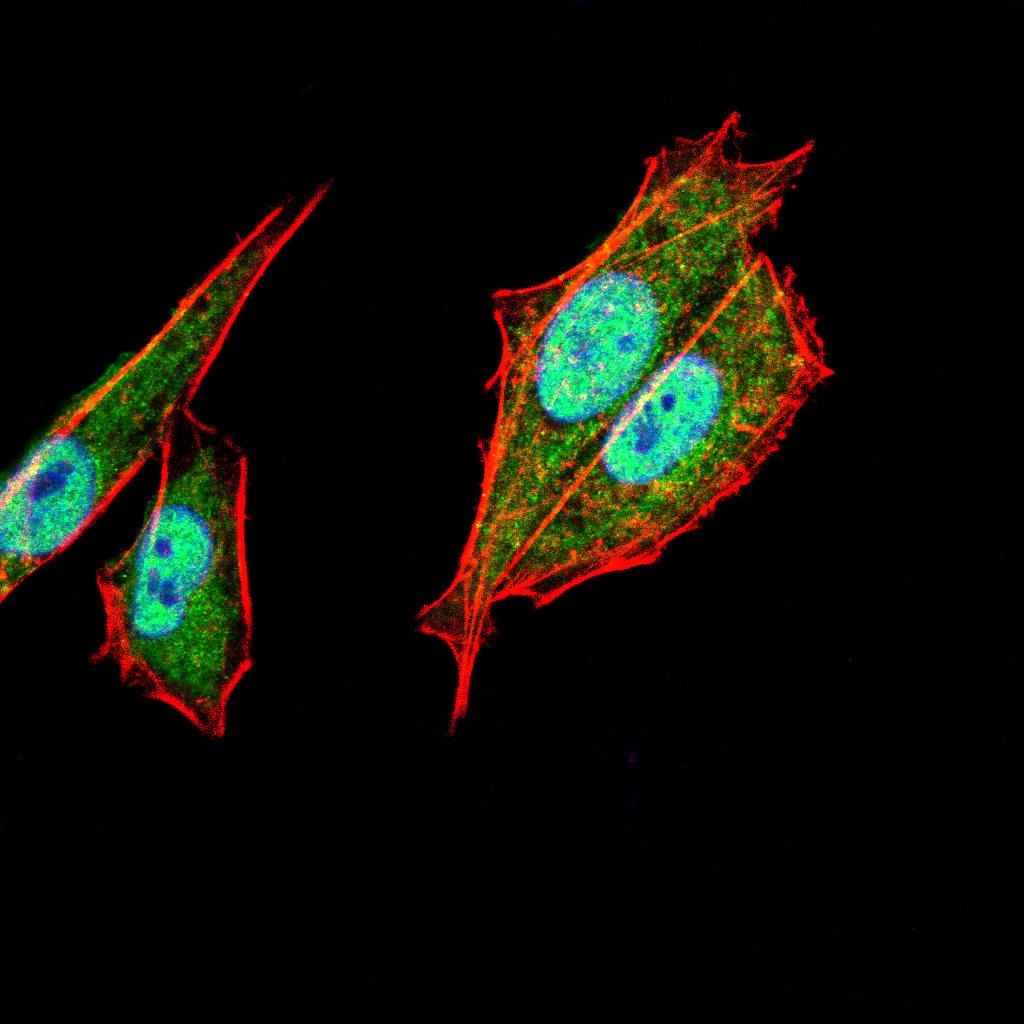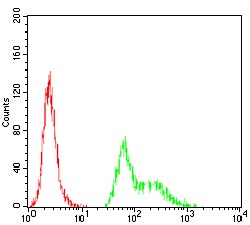Shopping Cart
Remove All Your shopping cart is currently empty
Your shopping cart is currently empty
Anti-TFAP2A Antibody (2N525) is a Mouse antibody targeting TFAP2A. Anti-TFAP2A Antibody (2N525) can be used in FCM,ICC,WB.
| Pack Size | Price | USA Warehouse | Global Warehouse | Quantity |
|---|---|---|---|---|
| 50 μL | $298 | 7-10 days | 7-10 days | |
| 100 μL | $427 | 7-10 days | 7-10 days |
| Description | Anti-TFAP2A Antibody (2N525) is a Mouse antibody targeting TFAP2A. Anti-TFAP2A Antibody (2N525) can be used in FCM,ICC,WB. |
| Synonyms | Transcription factor AP-2-alpha, Transcription factor AP2 alpha, Transcription factor AP 2 alpha (activating enhancer binding protein 2 alpha), TFAP2A, TFAP2, TFAP 2A, TFAP 2, FLJ51761, BOFS, AP2TF, AP2-alpha, AP2A_HUMAN, AP-2 transcription factor, AP2 Transcription Factor, AP-2, AP2, AP 2alpha, AP 2 transcription factor, Activator protein 2, Activating enhancer-binding protein 2-alpha, Activating enhancer binding protein 2 alpha |
| Clone | 2N525 |
| Reactivity | Human |
| Verified Activity | 1. Western blot analysis of AP2 alpha on human AP2 alpha recombinant protein using anti- AP2 alpha antibody at 1/1,000 dilution. 2. Western blot analysis of AP2 alpha on HEK293 (1) and AP2 alpha -hIgGFc transfected HEK293 (2) cell lysate using anti- AP2 alpha antibody at 1/1,000 dilution. 3. ICC staining AP2 alpha (green) and Actin filaments (red) in Hela cells. The nuclear counter stain is DAPI (blue). Cells were fixed in paraformaldehyde, permeabilised with 0.25% Triton X100/PBS. 4. Flow cytometric analysis of Hela cells with AP2 alpha antibody at 1/100 dilution (green) compared with an unlabelled control (cells without incubation with primary antibody; red).     |
| Application | |
| Recommended Dose | WB: 1:500-2000; ICC: 1:50-200; FCM: 1:50-100 |
| Antibody Type | Monoclonal |
| Host Species | Mouse |
| Construction | Hybridoma Monoclonal Antibody |
| Purification | ProA affinity purified |
| Appearance | Liquid |
| Formulation | 1*TBS (pH7.4), 1%BSA, 40%Glycerol. Preservative: 0.05% Sodium Azide. |
| Research Background | AP-2 transcription factor family members include AP-2α, AP-2β and AP-2γ, which specifically bind to the DNA consensus sequence CCCCAGGC and initiate transcription of selected genes. AP-2, also known as ERF-1, plays a role in regulating estrogen receptor expression. AP-2β, a splice variant of AP-2α, inhibits AP-2 activity. Besides subscribing to the AP-2 complex, AP-2α, AP-2β and AP-2γ proteins compose the OB2-1 transcription factor complex. OB2-1 specifically upregulates expression of the proto-oncogene c-ErbB-2, which is overexpressed in 25-30% of breast cancers. AP-2α may play an important role in the development of ectodermal-derived tissues. Deleterious mutations involving the AP-2α gene are linked to microphthalmia, corneal clouding and other anterior eye chamber defects. The ubiquitously expressed AP-4 transcription factor specifically binds to the DNA consensus sequence 5'-CAGCTG-3'. AP-4 interacts with promoters for immunoglobulin-κ gene families and simian virus 40. AP-4 may enhance the transcription of the human Huntington's disease gene. AP-4 is a helix-loop-helix protein that contains two distinctive leucine repeat elements. |
| Conjucates | Unconjugated |
| Immunogen | Recombinant Protein |
| Uniprot ID |
| Molecular Weight | Theoretical: 48 kDa. |
| Stability & Storage | Store at -20°C or -80°C for 12 months. Avoid repeated freeze-thaw cycles. |
| Transport | Shipping with blue ice. |
| Size | Quantity | Unit Price | Amount | Operation |
|---|

Copyright © 2015-2026 TargetMol Chemicals Inc. All Rights Reserved.